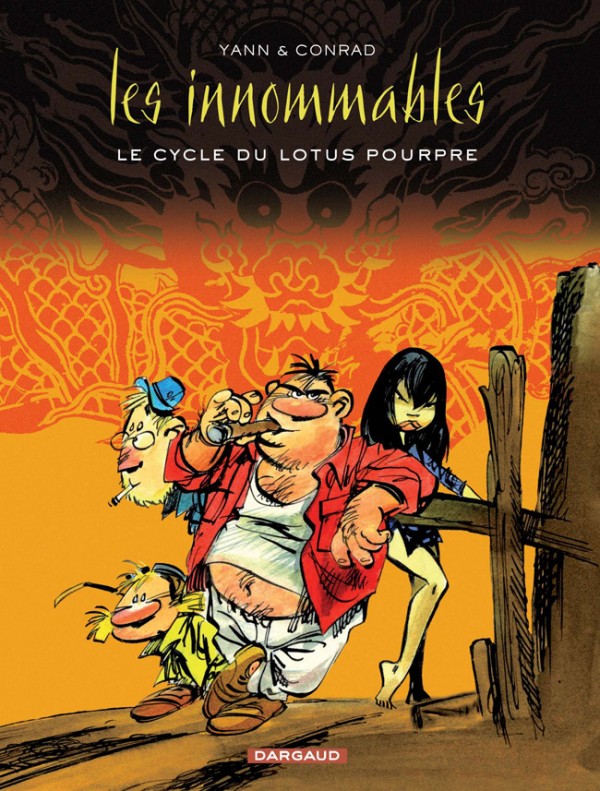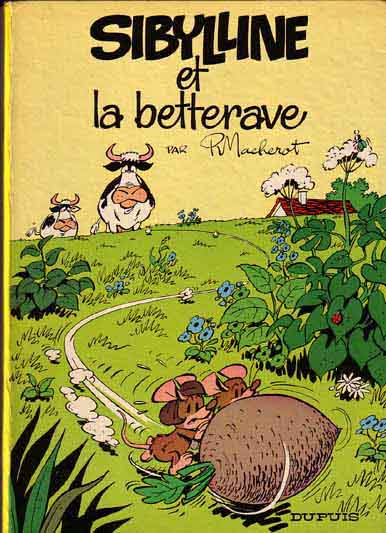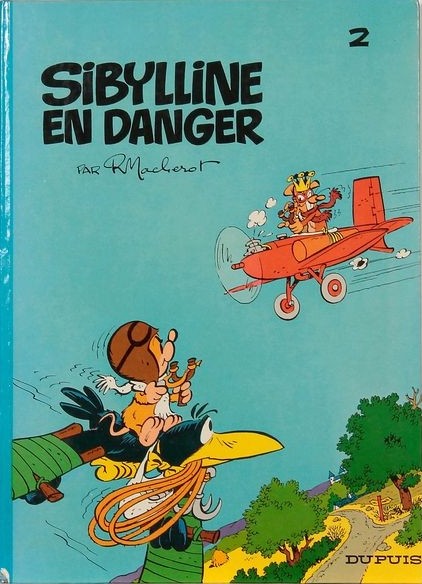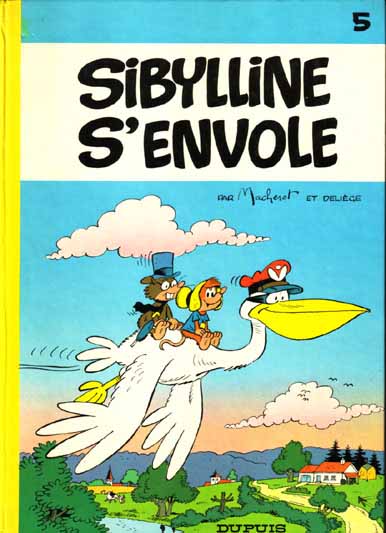Free download european classic comic, graphic novels or bande desinee.
Mirror blog :
Attention, for mirror blog please go here : https://europeancomicbandedesinee.blogspot.com/
Showing posts with label Spirou. Show all posts
Showing posts with label Spirou. Show all posts
Thursday, December 3, 2020
Spirou Hope Against All Odds
It seemed inevitable that Europe would once again be in the dark clutches of war, and now that conflict has broken out, Spirou must face its horrible reality while staying true to himself. He does his best to maintain his friendship with Fantasio, even as the latter enlists in the Belgian army. And when Spirou meets Felix, a German‐Jewish painter, his eyes are opened to the plight of the Jewish people and the dangerous situation in Europe and beyond. On top of all that, Spirou’s girlfriend Kassandra has been lost in the confusion of the war. In the first of four volumes, the orphan bellhop’s adventures will take him all across war-torn Belgium, discovering the world as it falls apart around him. Script by Émile Bravo - Art by Émile Bravo.
Sunday, July 16, 2017
Chaminou
Chaminou is a series of Belgian cartoon created by Raymond Macherot in Chaminou and the Khrompire appeared in the newspaper Spirou in 1964. It stages Chaminou, a cat detective.
Chaminou and the Khrompire is the first story in Raymond Macherot's Chaminou series. It is published for the first time no.1353 at no. 1381 of the newspaper Spirou.
Wednesday, July 5, 2017
Wofi
This album of dog "Wofi" totally unpublished, takes again the 63 boards appeared in 'Spirou' between 1976 and 1980, number 2022 to number 2210. Screenplay: Blesteau, Albert. Drawing: Blesteau, Albert.
Thursday, July 21, 2016
Isabelle
Isabelle was a Belgian comic series drawn by Will and written by André Franquin, Delporte and Raymond Macherot. The comic first appeared in Spirou magazine in 1969. Created by a top team of already-famous contributors to the magazine, the series gained a small but fanatical following. The first stories were written by Franquin (of Gaston Lagaffe fame), Delporte (editor of Spirou and writer of many comics) and Macherot (creator of Sibylline). Later, Delporte alone wrote the stories in collaboration with Will. Twelve albums were published until the series ended with Will's death in 2000.
The little girl Isabelle (named after Franquin's daughter) gets into a lot of adventures when the evil witch Kalendula troubles Isabelle's uncle Hermès and his fiancée, the good witch Calendula (who is the descendant of the evil Kalendula). Other stories are about a magical painting, a flying village or a floating island. The stories have a poetical tone, although mixed with tons of jokes and puns, rhyming ghosts, a talking diamond and Isabelle's down-to-earth aunt – whose greatest concern when Isabelle gets into an adventure is whether she's dressed warmly enough, even when she descends into Hades. The drawings are packed with details and the poetic nature of the stories comes through in the imaginative animals and backgrounds.
Saturday, July 9, 2016
Knockout Magazine
This magazine started 4th Mar 1939, ended 16th Feb 1963. Merged with Magnet 1941, became Knockout and Magnet until 1945, then just Knockout again. Merged with Valiant. The first, published by the Amalgamated Press (later Fleetway Publications), was launched by editor Percy Clarke and sub-editor Leonard Matthews in 1939 to compete with The Dandy and The Beano, launched by DC Thomson in 1937 and 1938 respectively. Like its rivals, it featured a mixture of humour and adventure strips and illustrated prose stories. Matthews recruited Hugh McNeill, a former Beano artist, as the title’s main humour artist, and his strips “Our Ernie” and “Deed-a-Day Danny” were very popular.
Two characters were imported from the prose story papers – Billy Bunter, formerly of The Magnet, initially drawn by C. H. Chapman, later by Frank Minnitt, and Sexton Blake, initially drawn by Jos Walker, later by Alfred Taylor, Roland Davies and definitive Blake illustrator Eric Parker. Also Jerry Spring (Jije) renamed into Slade, Spirou and Fantasio renamed into Dickie and Birdbath. After the Second World War the title featured more adventure strips, and Matthews, who was promoted to editor in 1948, recruited artists including Sep E. Scott, H. M. Brock, D. C. Eyles and Geoff Campion to draw them. The title lasted 1251 issues, from (cover dates) 4 March 1939 to 16 February 1963, absorbing The Magnet in 1940 and Comic Cuts in 1953, before being merged into Valiant. The second ran from (issues dates) 12 June 1971 to 23 June 1973, when it merged with Whizzer and Chips.
Friday, July 8, 2016
Mister Rectitude and Génial Olivier
Génial Olivier (Brilliant Olivier) is a humorous Belgian comic series about a child prodigy. Written and drawn by Jacques Devos, it first appeared in Spirou magazine in 1963 and lasted a quarter of a century, ending with Devos' retirement in 1988. The series consisted mainly of one-page gags and short stories which covered several pages. There were few full-length adventures. The strip was also notable for the puns and jokes in the text. Olivier's adventures have not been published in English. Below is a list of the French book titles and their year of publication. Most of them are collections of one-page gags and short stories. Almost all the stories were written and drawn by Jacques Devos, with one being credited to Frédéric Jannin. When the stories appeared in Spirou they were titled Génial Olivier, but the name was changed to M. Rectitude et Génial Olivier when published in book form.
Olivier Delabranche (i.e. Olive Branch) is a scientific genius well ahead of his time and his own age. Super-computers, various types of transport, robots, lifelike holograms, even the elixir of youth, he has invented the lot and more. Be it chemistry or technology, science holds few secrets from him. He qualifies for a dozen Nobel Prizes in those subjects and he is not yet a teenager ! Olivier is in fact a little boy of about 10. Unfortunately, the efforts of this child prodigy go largely unappreciated by the adult world, including parents and teachers. Whereas he should perhaps be in an advanced school where his talents would be developed (as if they needed to be) or even a top university, Olivier is in fact still stuck in a normal, everyday primary school. The reason for this is that, science apart, in all other respects he is a dunce. In history, geography, spelling and grammar, Olivier is at the bottom of the class and the despair of his teacher, Mister Rectitude.
Friday, June 17, 2016
Cupidon
Cupidon is a Belgian comics series written by Raoul Cauvin and drawn by Malik. Cupidon made its debut in the Franco-Belgian comics magazine Spirou on October 5, 1988. To date 22 albums have been published by Dupuis.
Cupidon features short stories about the adventures of a little Putto attempting to bring love on earth. His headquarters are in Heaven and he is dispatched by a (hot-tempered) Saint Peter. With his bow and arrows, Cupidon is usually prone to blunders, bringing together people of contrasting personalities, even matching together animals not necessarily of the same species.
Wednesday, February 10, 2016
The Unspeakables
The Unspeakables (Les Innommables) is a Franco-Belgian comic series written by Yann le Pennetier and drawn by Didier Conrad. It began publication in serialized form in 1980 in Spirou magazine and was eventually published in album form by Dargaud. The first edition of the album Alix-Noni-Tengu contained two alternative endings. In re-editions, only the second ending was retained. The character of Alix was made the subject of a six-volume spin-off series, Tigresse blanche. The Unspeakables has been translated into German (Helden ohne Skrupel) and Dutch (De onnoembaren). The album Pas-de-mâchoire was nominated for the 2001 Angoulême International Comics Festival Prize for Scenario.
The series recounts the adventures of three U.S. Army deserters – Mac, Tony and Tim – in 1949, as they trek across Asia and search for Alix, Mac's lover and a Chinese communist spy. This comic is characterized by its black humor as well as frequent displays of nudity and violence – which eventually ended the series' run in Spirou.
Monday, February 8, 2016
Bobo
Bobo is a Franco-Belgian comics series created by Paul Deliège and Maurice Rosy. The series features an eponymous prisoner of the jail Inzepocket ("in the pocket" with a French accent). In Dutch, the series' name is Jaap. Bobo first appeared in a mini–récit (mini-story) in Spirou magazine on May 11, 1961 In the early years, it was written by Rosy, who also took artistic responsibility during a brief period in the 1970s. Eventually, the character evolved into its own series, mostly consisting of short stories, and a few full length (i.e. 44 pages) stories. Fifteen albums appeared until the 1990s, when the series ended its run.
Bobo was sentenced to twenty years in jail for stealing a bicycle (it was the bicycle of the sentencing judge). Bobo is always trying to escape in various ways, usually by digging, and thus make his way to the beaches of Acapulco. Other major characters are the prison's manager who is fond of pies and cookies; the prison bully who has it in for Bobo and his various schemes; the Professional, a grumpy old prisoner who insists that everything be done "by the book," his copy of which dates back to before the prison reform movement (at his insistence, the Professional lives in an old dungeon, wears a ball-and-chain, does heavy labor and only eats stale bread and dirty water); and Stonie the warden, who always carries a stone (left over after building the prison), and which he is constantly trying to get rid off, but his colleagues insist that he carries. There is also Julot-les-pinceaux (Julian Brush), Bobo's outside accomplice who is always coming up with various schemes to get his beloved boss out of the nick.
Wednesday, February 3, 2016
Alone
Alone is a series of adventure fantastic Franco-Belgian comic written by Fabien Vehlmann and designed by Bruno Gazzotti for the magazine Spirou. It was published in hardback albums by Editions Dupuis from January 2006. In 2015, it has nine albums, five undergraduate and second cycle with four. This series was twice awarded a Prix Jeunesse 9-12 years in Angoulême Festival in 2007 and 2010. It also received two Grand Prix du Journal de Mickey. It should count total twenty albums.
After the sudden and unexplained disappearance of the inhabitants of Fortville, five children to defend for themselves in a world without adults. Things will get worse when they discover that they are in a replica of the real world called "the world of limbo" and they are the prey of mysterious "15 families". Would Fortville's different from other children? And if one of them would be what the family calls the 15th "Midnight Children"?
Monday, January 4, 2016
Caesar
Caesar, or "Cesar and Ernestine" is a series of comic humorous from Belgian author Maurice Tillieux. It depicts a cartoonist comic named Caesar facing everyday problems and Ernestine, the daughter of his neighbor which he is required to deal with. It must also support his housekeeper, Eglantine, and its neighbor the police officer Petitcarné. The series, first published in the newspaper Spirou between 1957 and 1959, is then transferred to the paper The Mosquito between 1959 and 1966, before the gags appeared in The Mosquito be published again in Spirou and editor Dutch Robbedoes of 1969 in 1973. The series is published in parallel in four albums in paperback and then republished in full year 1980 and 90, as well as in November 2011.
The series tells the daily life of Caesar, a single cartoon designer in the great drama of life. He would like a quiet life, but unfortunately for him, he must bear Ernestine, the daughter of his neighbor which he is required to deal, the police officer Petitcarné, neighbor and father of Ernestine that sticks tickets for nothing and housekeeper Eglantine not live.
Thursday, December 31, 2015
Sibylline
Sibylline is a series of Franco-Belgian comics created in the newspaper Spirou no.14034 March 1965 by Raymond Macherot, supported by Paul Deliège scenario for albums of no.5 to no.7.
After a long hiatus, the series resumed in 2006 by André Taymans, helped by Raymond Macherot and François Corteggianithe scenario of some stories. Distributed album editions Dupuis from 1967, it is abandoned by the same publishing house before reaching the hands of editions Flouzemaker in 2006. Published in the journal Spirou from 1965 to 1990, the series features Sibylline , a little mouse anthropomorphic who lives in Happy Grove. There, she faces enemies like Anathema who want to take power. The series, beginning at tinged with humor and kindness will switch into the fantastic and supernatural, with wicked increasingly violent.
The series depicts the little mouse anthropomorphic Sibylline who took up residence at Happy Grove, after living in a human home. The small world of Happy Grove is organized like a small animal society with its merchants, its font, its army and its villains who want to overthrow the government. Subsequently, the series is increasingly tinged by keys fantastic and supernatural where the wicked, which become increasingly dangerous, take the lead in the stories at the expense of the nice Sibylline.
Sunday, December 27, 2015
Tif and Tondu
Tif et Tondu (Tif and Tondu) is a Belgian comic strip about a duo of private investigators, originally created, written and drawn by Fernand Dineur. Several artists and writers have worked on the series but the most popular version is that drawn by Will, with writers Maurice Rosy, Maurice Tillieux and Stephen Desberg. The strip first started in 1938 and lasted until 1997, just one year short of its 60th birthday. Tif and Tondu are adventurers and detectives who solve cases around the world, from the United States to the Congo. The central irony of the series' title was that the two friends had names which actually better suited the other: Tif is French slang for "hair" yet the character is bald-headed and clean-shaven. He also tends to be more reckless and has an eye for the ladies.
Tondu is the French for "sheared" but he wears thick hair and beard. He is also more level-headed and is the brains of the partnership. He often takes up journalism when short of money.
The series made its debut on 21 April 1938 in the first issue of Spirou magazine as Aventures de Tif, written and drawn by Fernand Dineur. Within a few issues Tif had made the acquaintance of Tondu, ashipwrecked sea captain, and the two joined forces, traveling the world in search of adventure.
In 1949, Dineur passed the drawing over to Will, but continued to provide the scenarios for the next three years before retiring from the strip. At this time, their adventures were also published in Héroic Albums, drawn by Dineur. Another artist, Marcel Denis, also contributed a handful of stories in the early 1960s. Will himself worked on the strip for almost 40 years in collaboration with various writers. This period, kept together by his distinctive drawing and handling of the characters, is seen as the strip's golden age.
Thursday, December 24, 2015
Theodore Poussin
Théodore Poussin is a comic book series created by French writer Frank Le Gall about a glasses-wearing hero - it was first published in 1984, in Spirou magazine. The third volume of the series, Marie-Vérité won 1989 Angoulême International Comics Festival Prize for Best Comic Book. Dunkirk, 1927.
Born in 1902 in Dunkerque, Théodore Poussin is a young adventurer, bald head and round glasses. The character is inspired by the grandfather Frank Le Gall, Theodore Charles De Haan and his newspaper. The young Théodore Poussin, clerk in a shipping company, dreams of going to sea and go exploring. So he embarks among the crew of the Cap Padaran as a pupil Commissioner, and share in the footsteps of his uncle, Charles Steene, missing and presumed dead in 1916 in Haiphong. He ignores that he will not see his family before Dunkirk and three years during which he will live many adventures, exercising various trades, from Singapore to Saigon.
Thursday, December 17, 2015
Attila Adventures
Attila Adventures also entitled Attila is a series of Franco-Belgian comics of adventure humorous animal created in 1967 by the Belgian writer Maurice Rosy and Swiss designer Derib in no.1531 of the newspaper Spirou. From 1968, Maurice Kornblum will co-write with Rosy scenarios of the series. The drawing will be resumed in 1987 by Didge for ultimate story.
The series features the dog Attila, spy of the Swiss army, whose mental faculties were increased, notably with the acquisition of speech, to become their best player. He is accompanied by his master Ernest Bourrillon, a former quartermaster. From the album no.2, it adopts a young boy named Odee, then from the next album, they are helped by another spy dog known as the Z14, created by Professor Comant.
Published in Spirou from 1967 to 1973 and then in 1987, this story is published alongside soft album Dupuis from 1969. The same publishing house published four albums until 1974, then a full in 2010. That same year, The Cow who meditates publishes the fifth story, hitherto unpublished, as an album.
Originally based on humor produced by the dog shift both spy and as another animal, the series will deviate to the world of science fiction. This intrusion will score a disagreement between the duo screenwriters Maurice Rosy - Maurice Kornblum and Derib designer who will prematurely end the series, though promised by lovers of comics to become a classic.
Sunday, November 29, 2015
Women in white
Les Femmes en blanc (Women in white) is a Belgian comics humor series of 33 volumes, for which the script was created by Raoul Cauvin and whose design was directed by Philippe Bercovici. Colours were done by Leonardo. The series debuted in 1981 in the Belgian comic book magazine Spirou and the first volume was released in 1986. The setting of the series is a field hospital. The series deals with the troubles of nurses in a humorous and sometimes ironic, sometimes comic fashion.
A series of short stories with a title are illustrated, and usually deal with some foible, with a medical problem or quirk. For example, in volume 29, the story a malin, malin et demi deals with a patient with nausea, vomiting, and dizziness. The nurse helps him to the bathroom and back. The toilet starts to run and the nurse calls a plumber to fix it. He discovers a bottle of booze in the tank, nearly empty. The nurse realizes that the patient is an alcoholic and has been going to the bathroom to drink and arranges to dry him out. The plumber then tells his incredulous wife at dinner. Over the volumes (whose titles contain puns), several characters appear regularly as the doctor or nurse Nathalie Minet or nurse Lisette.
Saturday, November 21, 2015
XIII
XIII (Thirteen) is a Belgian graphic novel series about an amnesiac who seeks to discover his past. It was created by writer Jean Van Hamme and artist William Vance. XIII was released in 1984 as a serial in the popular Spirou magazine, and it was popular among Spirou readers. The first three episodes were released as a single hardcover volume by Dargaud the same year. XIII was originally written in French, and it was translated into several languages, including Dutch, German, Polish, Tamil, Serbo-Croatian, and Italian.
Jean Van Hamme has declared that he will not continue to write the series, but William Vance is interested in continuing it with another writer. Yves Sente, who had already taken over writing Thorgal from Van Hamme, was interested to continue the series. He was contacted by William Vance and said he'd propose a story to Van Hamme, but no agreement has been reached yet. Ever since October 2008, Sente has authored volume 20 of the comic series (Mayflower Day), published in late 2011, alongside Youri Jigounov.
Subscribe to:
Posts (Atom)






















